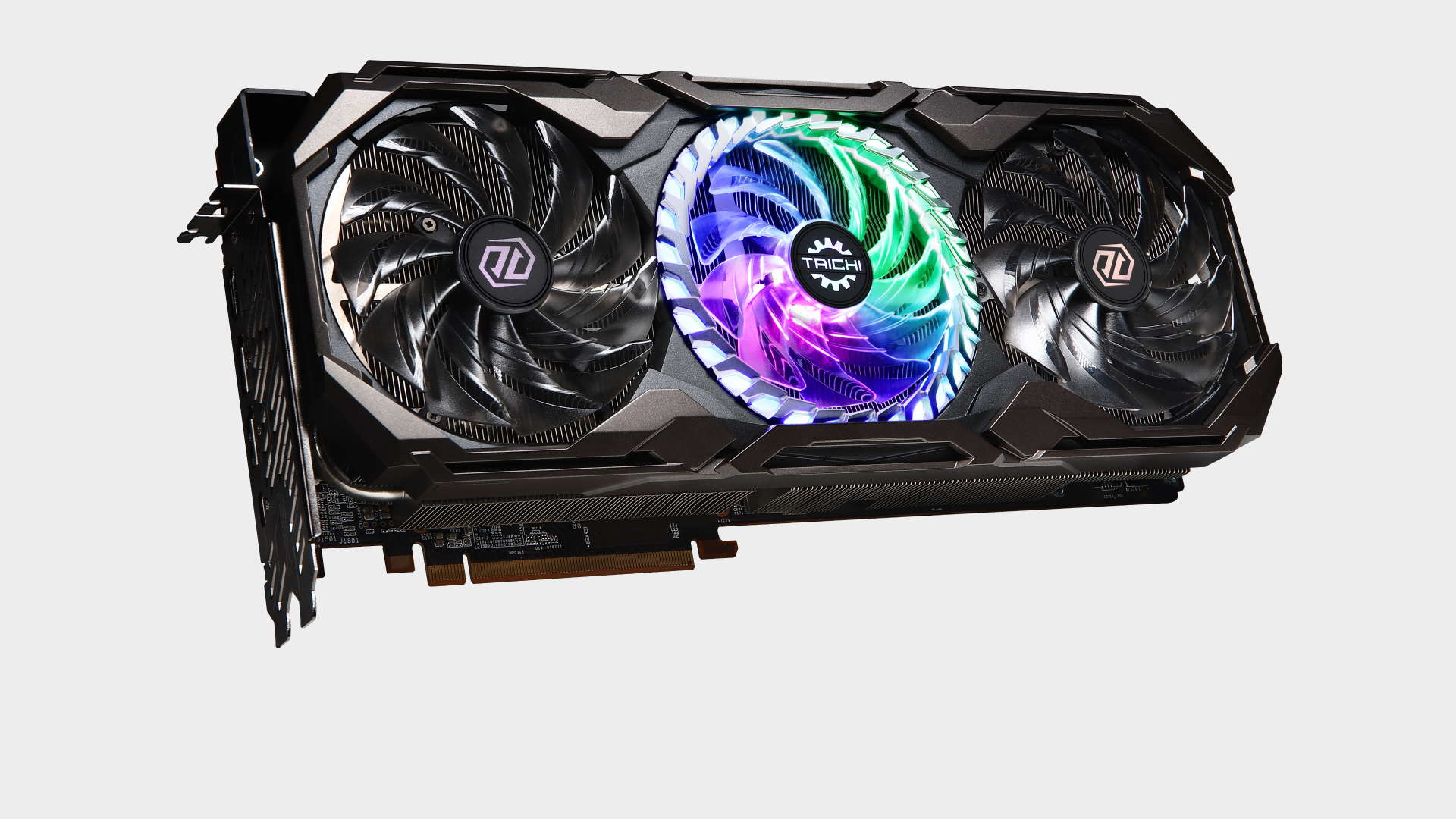Our Verdict
The ASRock RX 6800 XT Taichi X can hold its own against any of the well established premium tier AMD graphics cards.
For
- Strong out of the box performance
- Quality feature set
- Overclocking capability
Against
- Not the quietest card on the market
- Expensive – though poor availability contributes to that
PC Gamer's got your back
One might typically associate the practices of Taichi with tranquillity and harmony, but these characteristics certainly don’t apply to the ASRock Radeon RX 6800 XT Taichi X OC. On the contrary, it’s about as peaceful as bull in a porcelain shop. There’s nothing subtle about the Taichi X. It’s big, bold, brawny, and bright. On paper its among the fastest of all AMD RX 6800 XT cards. If you want the world to know you have a high end version, there are few that stand out more than the RX 6800 XT Taichi X.
ASRock is well known as a motherboard manufacturer but it’s a relatively new entrant to the GPU marketplace. And, at least for now, it only produces AMD cards. The RX 6800 XT Taichi X is every bit the premium card; the huge cooler, robust PCB, factory overclock, useful features, and generous lashes of RGB lighting all add up to what is a serious piece of graphics hardware.
When the RX 6800-series launched in November, we welcomed its inter generational performance leap and its competitiveness with the Nvidia RTX 3080 and Nvidia RTX 3070 cards. The RDNA2 architecture brings full DX12 Ultimate support, ray tracing capabilities, and some interesting features such as Smart Access Memory (resizable BAR). And soon, a driver update will introduce a super resolution mode similar to Nvidia’s DLSS.
While rasterization is still king, the winds are beginning to change. Games like like Cyberpunk 2077 show off ray tracing at its beautiful best and we've crossed a threshold that should lead to RT becoming as common as AA or AF. Thanks to the growing console user base, AMD has an architecture that developers should become intimately familiar with in the coming years. AAA gaming over the next few years will be interesting!
GPU - AMD Navi 21
Architecture - AMD RDNA 2
Lithography - TSMC 7nm
Base clock - 1,925MHz
Boost clock - 2,360MHz
Memory - 16GB GDDR6
Memory speed - 16Gbps
Memory bandwidth - 512GB/s
Outputs - 2x DP 1.4a, 1x HDMI 2.1, 1x USB Type-C
Power connections - 3x 8-pin
The RX 6800 XT makes use of a slightly cut down version of the Navi 21 GPU. It has 4,608 cores vs the 5,120 of the AMD RX 6900 XT. Where the RX 6800 XT features a boost clock of 2,250MHz, the Taichi X pushes this 110MHz further to 2,360MHz. The memory specification of the reference RX 6800 XT and the Taichi X is identical, with 16GB of 16Gbps memory over a 256 bit bus.
The Taichi X is a triple slot card. It’s tall too so you’ll need to make sure it will fit in your case and the overall look is very aggressive. The cogs and wheels design theme common to Taichi motherboards carries over. There’s a stylized back plate with an RGB lit Taichi logo as well as a light bar across the case facing side of the card. Looks are subjective but that middle fan deserves to be shown off in a vertical orientation.
If RGB illumination isn’t your thing there’s an onboard switch to turn it all off. That’s a thoughtful feature. You’ll also find an ARGB header so you can connect the card to other RGB devices. The card has twin BIOS choices with an optional quiet setting that lowers the boost clock to the reference 2,250MHz leading to a slightly lower power draw and lower fan speed.
The display outputs consist of a pair of DisplayPort 1.4a, one HDMI 2.1, and one USB type-C. In a perfect world we’d like to see three DisplayPorts so triple monitor users won’t face any hassle though the USB port supports DisplayPort passthrough.
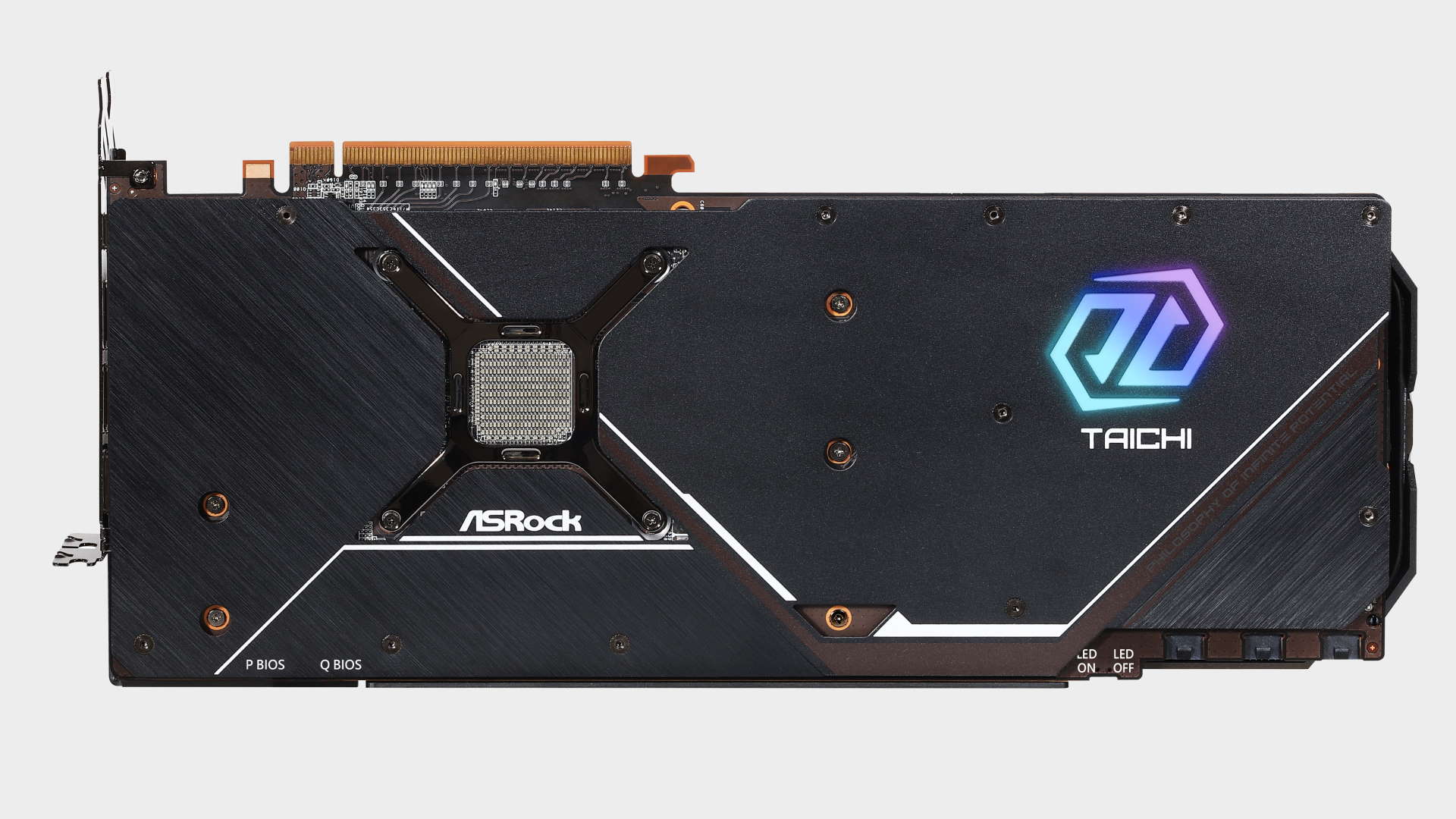
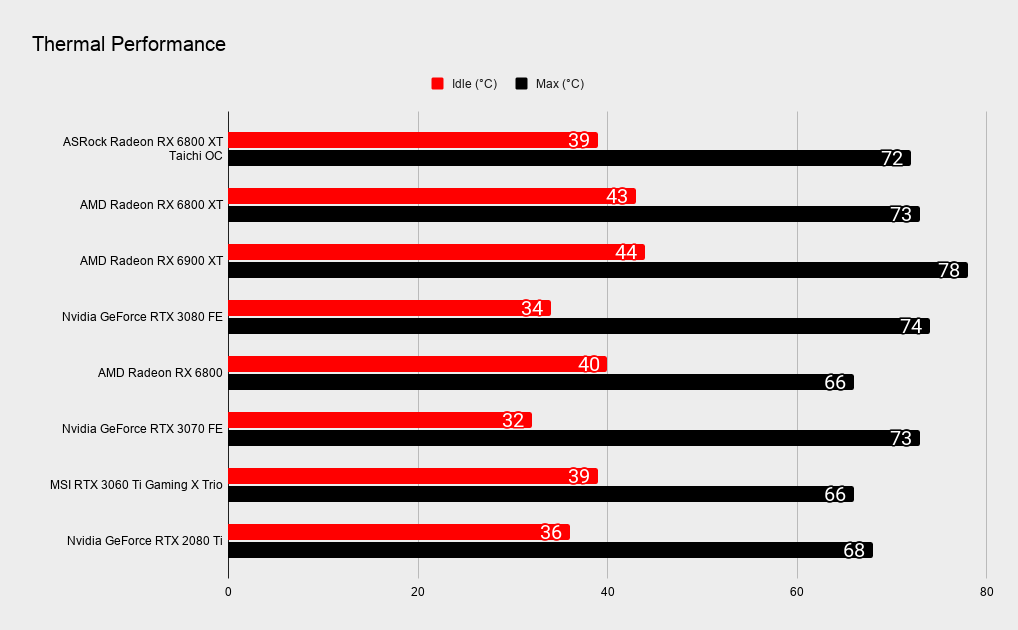
The Taichi X is a fully custom design with a strong and robust PCB. A 13 phase VRM plus another three for the memory provide ample headroom for overclocking. You’ll notice that the card has three 8-pin power connectors. Add all that power to the 75W available from the PCIe slot and you get a massive 525w of power on tap. Perhaps if 3rd party software tools or a special OC BIOS is released that unlocks higher power limits, this design will really be allowed to shine.
The Taichi cooler is generally effective. It seems as though ASRock has tuned it in order to keep temperatures down. This makes it an audible card under load but during testing it was never intrusive. At idle the fans stop altogether. If noise levels are a concern, there’s always the quiet BIOS or you can try the undervolt setting in the Radeon software suite. An Alaskan gamer might look at cooling a little differently than one in Arizona, so tweak away!
1440p gaming performance
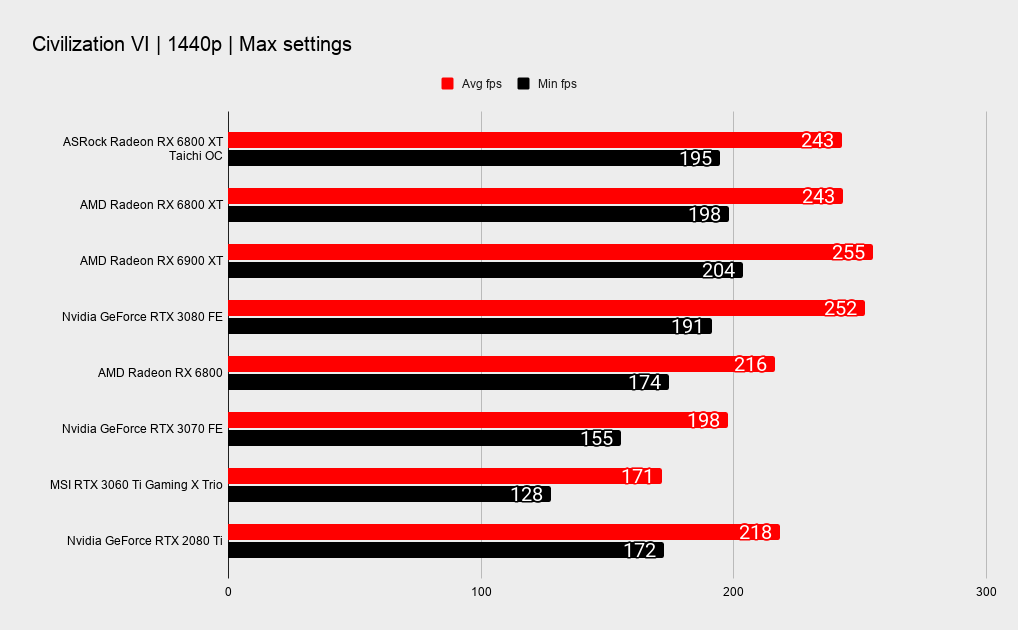
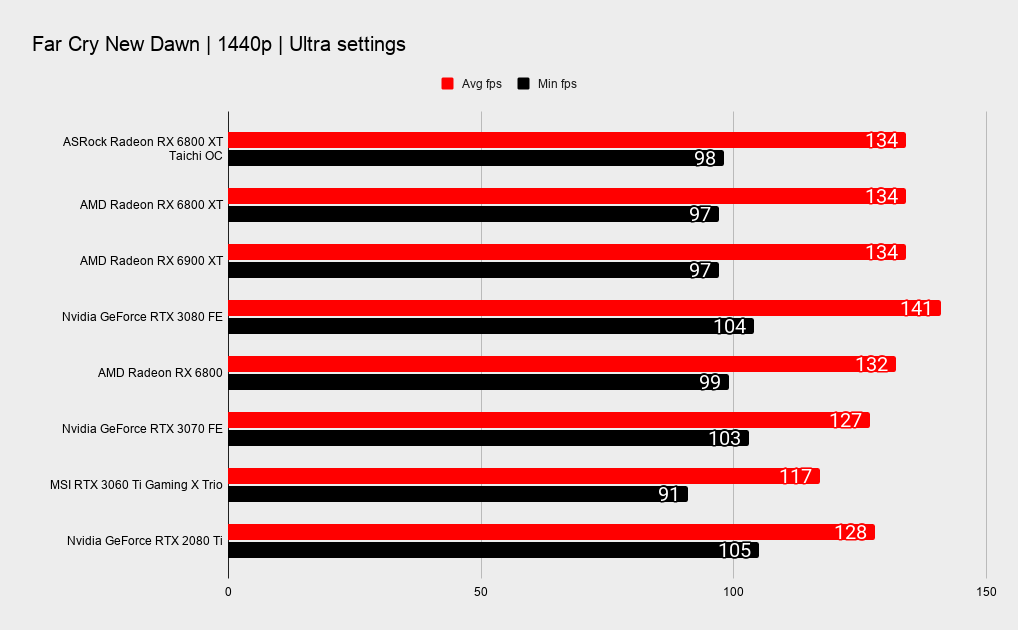
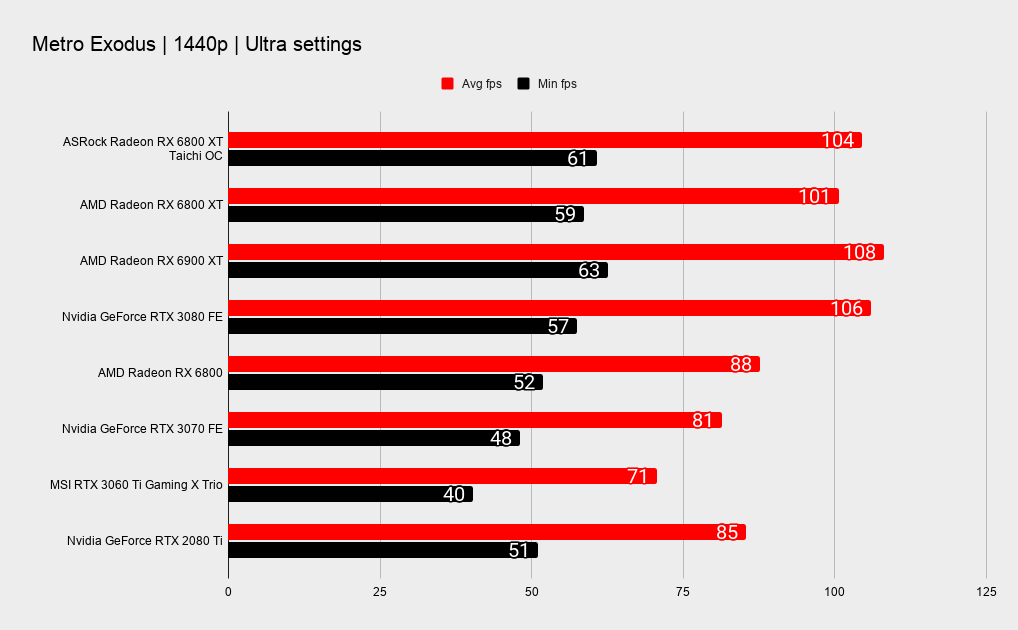

4K gaming performance
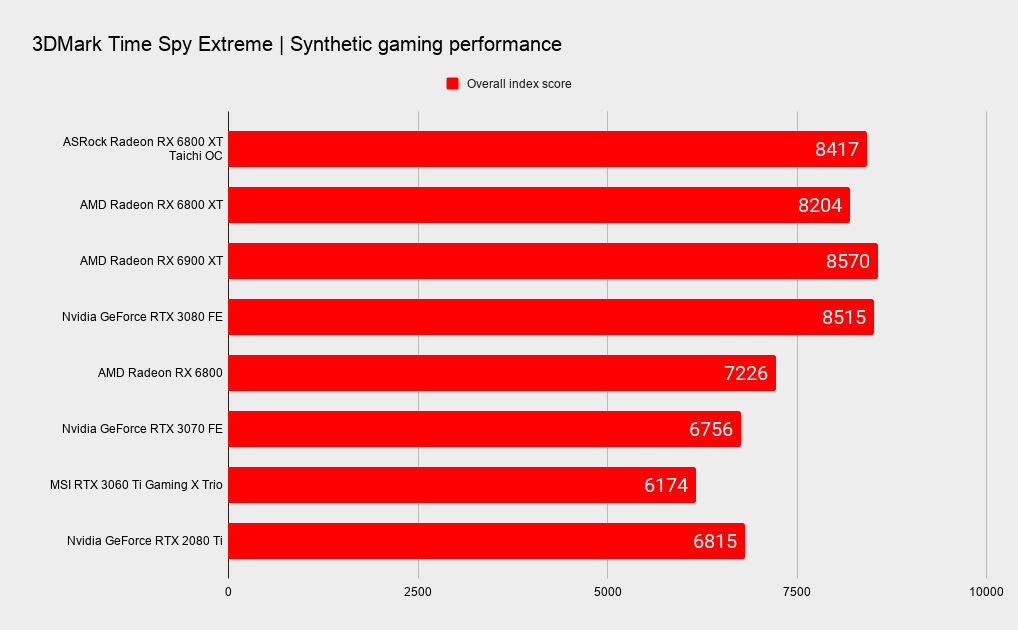
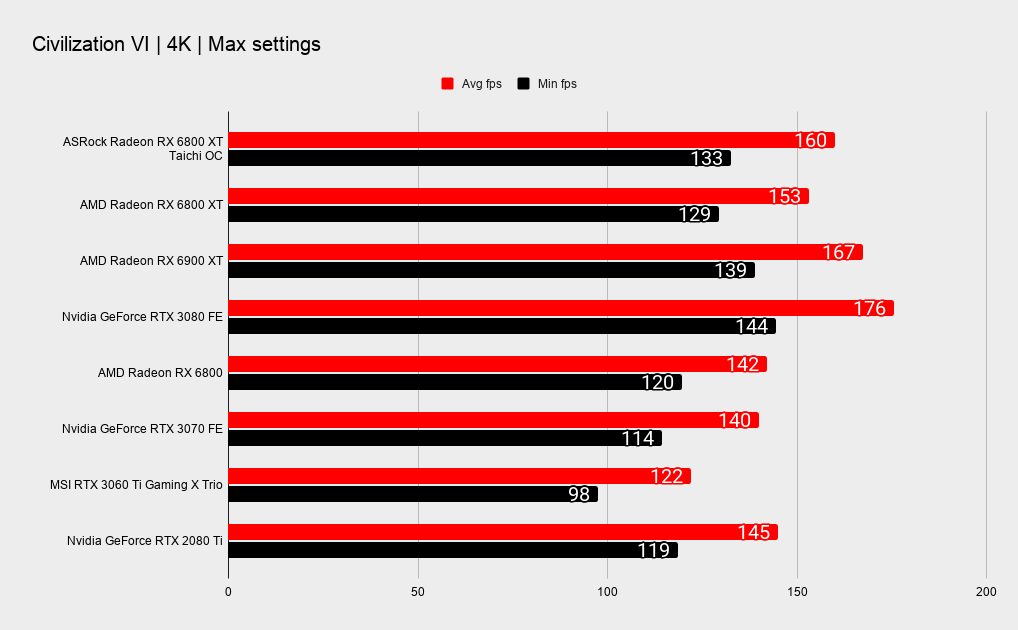
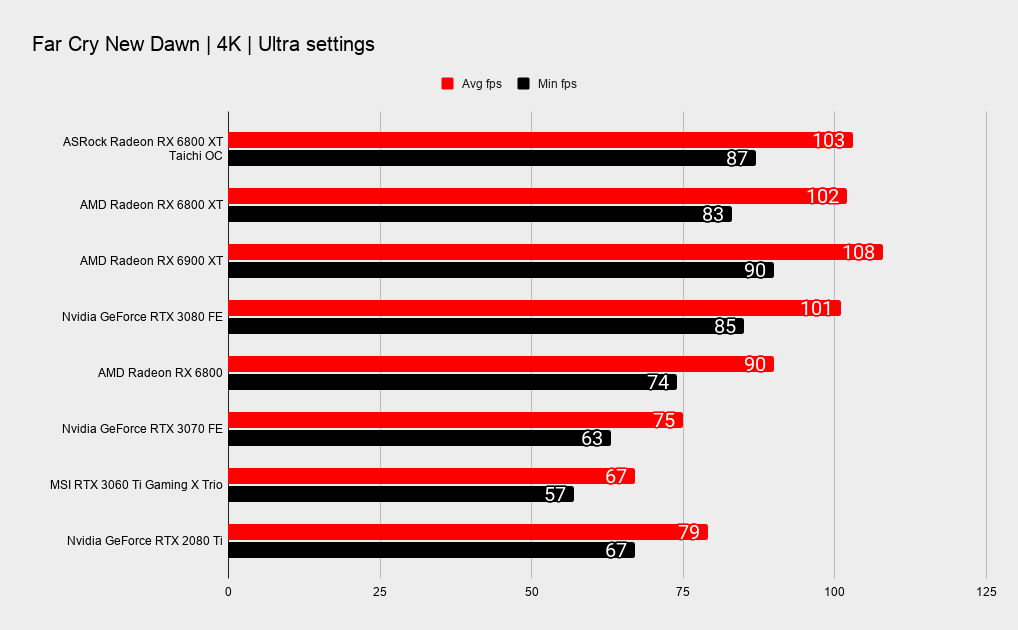
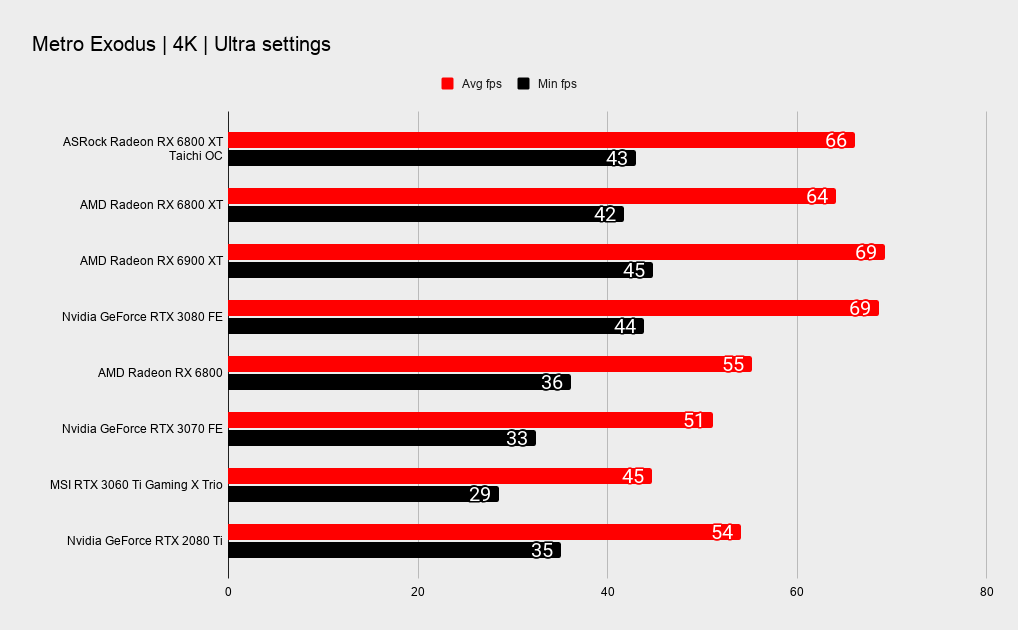
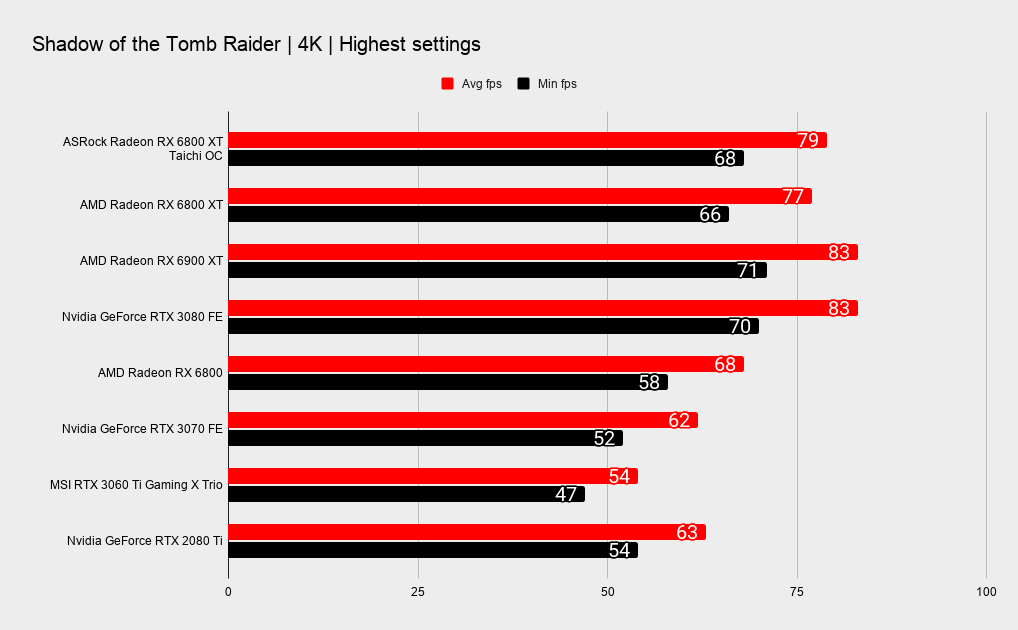
CPU - Intel Core i9-10900K @ 5.1 GHz all cores
Motherboard - Asus Maximus XII Apex
Memory - 16GB Team T-Force Xtreem ARGB 3,600MHz
Power Supply - Corsair AX1000
Storage - 1TB Samsung 860 Pro (OS), 1TB Western Digital SN750 Black (Games)
Cooling - NZXT X73 360mm AIO
Operating system - Windows 10 Pro 1909 64-bit
The RX 6800 XT Taichi X is among the fastest factory overclocked RX 6800 XTs and this shows in performance testing. As it turns out though, much like we see with Nvidia’s boost algorithm, the advertised boost clock means relatively little. The quality of the GPU silicon itself, along with power consumption and temperatures play a more significant role. The Taichi X was able to hold a 2,375MHz boost clock after 10 minutes of a looping test which puts it within striking distance of the mighty RTX 3080, and even ahead in some cases!
It’s always interesting to see just how the overclocking silicon lottery plays out. Power limitations are the main bottleneck, with both the Radeon software suite and ASRock’s Tweak application both limited to a 15% power limit increase. With this in mind we were able to overclock the Taichi X up to an impressive 2,550MHz average GPU clock, combined with 2,150MHz memory. This put it comfortably ahead of the RX 6900 XT in the 3DMark Time Spy Extreme benchmark (8843 vs 8570) as well as Metro Exodus at 4K (70.9 FPS vs 69.3 FPS).
The card becomes noticeably audible when pushed, but if you’re gaming with a set of headphones, will it matter? It’s nowhere near as loud or tonally irritating as those banshee leaf blowers of old.
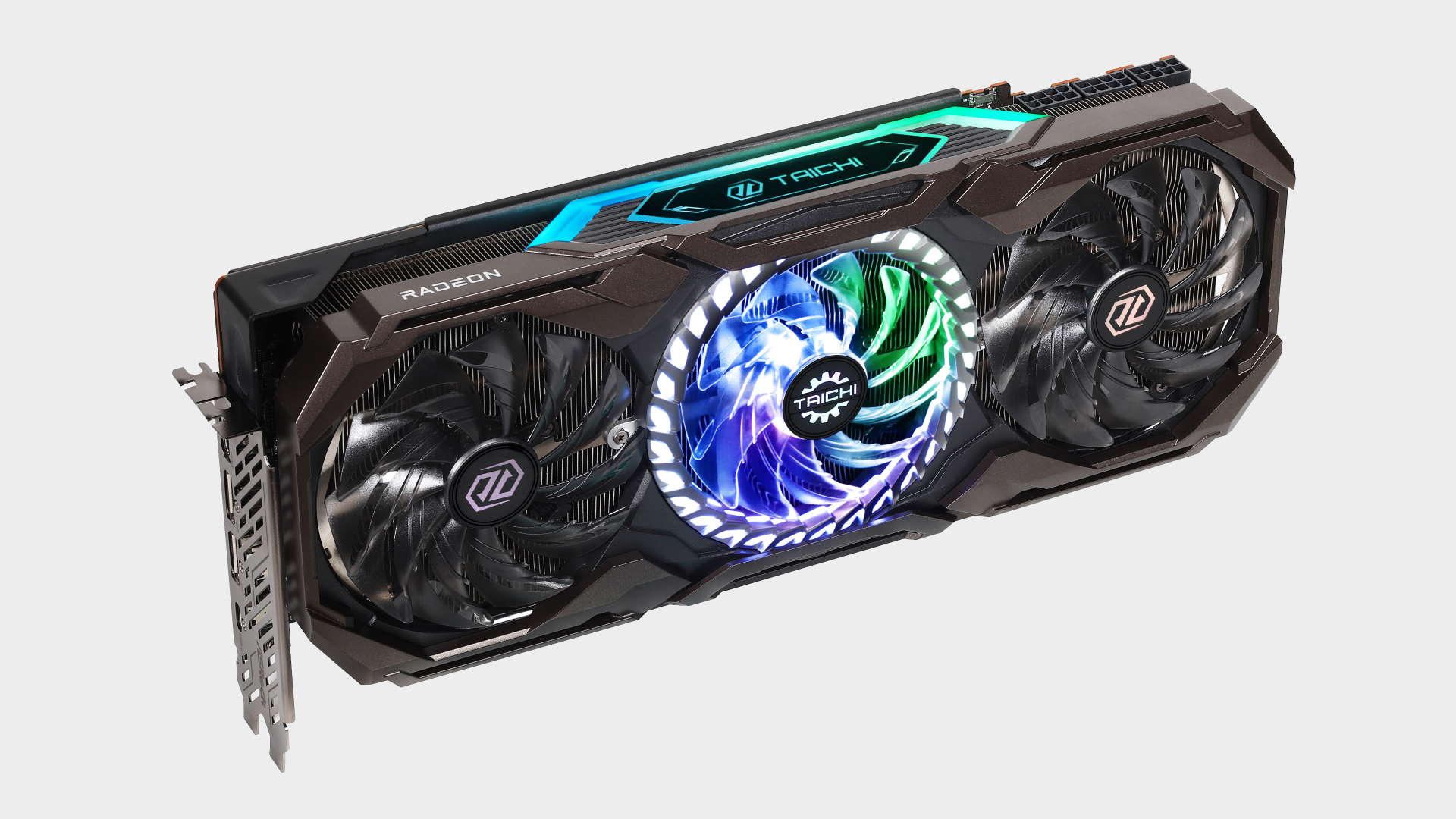
Now we come to the elephant in the room: Availability. None of this matters if you can’t actually find one! By now you’d expect to have a wide range of 6800 options to choose from, but here we are 2 months after the launch and shelves are bare. It’s no leap to say that this launch has been a disaster.
Whatever the reason, whether it’s Covid havoc, mining demand, a component shortage, or Apple hogging all the 7nm foundry capacity, it’s been a poor launch. Sony, Microsoft, and Nvidia are facing similar supply issues. Let’s hope these issues are not repeated. Many gamers looking forward to upgrades over the holidays would have been very disappointed.
But the ASRock RX 6800 XT Taichi X itself is big, bright, and in your face. It walks the walk, and it’s a great 4K gaming option with performance that all but rivals that of the RTX 3080. Though, as you might expect, Nvidia has a performance edge in the games that feature ray tracing, especially with DLSS enabled.
At $830 USD the RX 6800 XT Taichi X is pricey for sure, but that’s not out of line with the likes of the Powercolor Red Devil or MSI Gaming X. Yes, the reference card is supposed to be only $650 but—how to say it politely—Pig's derriere. Good luck finding one at that price.
If you’re looking for a fast card out of the box, that looks great and should overclock well, then the ASRock 6800 XT Taichi X deserves to be considered alongside any RX 6800 XT, from any vendor. As long as you can find one that is.
The ASRock RX 6800 XT Taichi X can hold its own against any of the well established premium tier AMD graphics cards.

Chris' gaming experiences go back to the mid-nineties when he conned his parents into buying an 'educational PC' that was conveniently overpowered to play Doom and Tie Fighter. He developed a love of extreme overclocking that destroyed his savings despite the cheaper hardware on offer via his job at a PC store. To afford more LN2 he began moonlighting as a reviewer for VR-Zone before jumping the fence to work for MSI Australia. Since then, he's gone back to journalism, enthusiastically reviewing the latest and greatest components for PC & Tech Authority, PC Powerplay and currently Australian Personal Computer magazine and PC Gamer. Chris still puts far too many hours into Borderlands 3, always striving to become a more efficient killer.
